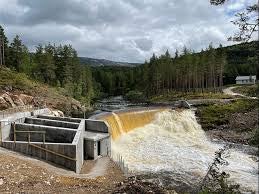A new US Department of Energy-sponsored guidebook, spearheaded by Argonne National Laboratory, helps illustrate the value of investing in pumped storage technology.
Pumped storage hydropower currently provides about 94% of all energy storage in the US, providing flexibility and support to the nation’s traditional power grid. However, its value has been historically difficult to capture.
“Grid operators love pumped storage hydropower, but energy storage technologies are not adequately represented in current electricity markets,” explained Vladimir Koritarov, acting director and program manager of the Center for Energy, Environmental, and Economic Systems Analysis at the U.S. Department of Energy’s (DOE) Argonne National Laboratory. “The market design doesn’t represent well their unique characteristics, which include both generation and demand.”
To address this gap, the DOE’s Water Power Technologies Office tasked Koritarov and his colleagues at Argonne, as well as four other national laboratories (Idaho National Laboratory, National Renewable Energy Laboratory, Oak Ridge National Laboratory and Pacific Northwest National Laboratory), with developing definitive guidance on how to value pumped storage hydropower projects. The effort was successful, and this spring the DOE published the Pumped Storage Hydropower Valuation Guidebook: A Cost-Benefit and Decision Analysis Valuation Framework.
The guidebook helps measure both monetized and non-monetized value streams. For example planning a new project can examine effects of market rules and mechanisms, and the likelihood of recouping investment. Regulators can judge if a project is economical and predict when a new plant will have a positive impact on consumers’ electricity rates. A financial institution can find assurances before it approves loans or loan guarantees. Others can use the guidebook to assess a plant’s impact on de-carbonization goals, grid resiliency or the environment.
In addition to providing techno-economic analysis, the guidebook offers multi-criteria decision analysis that weighs monetized and non-monetized benefits. Readers can come up with an overall ranking of different plant capabilities, or find a best alternative by taking into account various aggregates.
Developers of current pumped storage hydropower projects, such as Rye Development and Absaroka Energy, are already betting the guidebook will help stakeholders understand the true potential of this clean energy storage technology.
“We are happy to see it released,” said Erik Steimle, Vice President of Project Development for Rye Development. “It will help companies like ours explain the benefits and importance of projects like the Goldendale Energy Storage Project.”
Eli Bailey, Vice President of Business Development of Absaroka Energy, added: “[The guidebook] will be an important touchstone for [many] throughout the energy industry to educate themselves and understand the true value of pumped storage hydropower. It will help create the case for deploying this important technology in the United States.”
Source: Argonne National Laboratory






